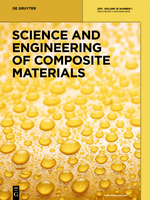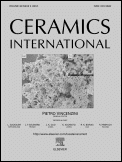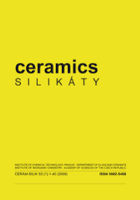
REFRACTORIES AND INDUSTRIAL CERAMICS
Scope & Guideline
Fostering Excellence in Refractory and Ceramic Innovations
Introduction
Aims and Scopes
- Development and characterization of refractory materials:
The journal publishes research on the synthesis, properties, and applications of various refractory materials used in high-temperature processes, such as steelmaking and glass production. - Innovations in ceramic processing techniques:
Research on advanced manufacturing methods, including additive manufacturing (3D printing), sintering, and various coating technologies, is a key focus area. - Environmental sustainability and waste utilization:
The journal emphasizes studies on utilizing industrial waste in the production of refractories and ceramics, aiming to enhance environmental sustainability in industrial processes. - Tribological and mechanical properties of ceramics:
Research exploring the mechanical behavior, wear resistance, and tribological properties of ceramic materials under various operational conditions is frequently featured. - Thermal and structural analysis of ceramic materials:
The journal covers studies that investigate the thermal stability, structural integrity, and phase transformations of ceramic materials under different conditions.
Trending and Emerging
- Nanotechnology in ceramics:
Recent publications highlight the growing interest in nanoceramic materials, focusing on their unique properties and potential applications in various high-performance environments. - Smart ceramics and coatings:
There is an increasing trend in research dedicated to smart ceramics and functional coatings that respond to environmental stimuli, enhancing their applicability in advanced engineering. - Sustainability and eco-friendly materials:
Emerging themes include the development of eco-friendly materials and processes, particularly those that utilize industrial by-products, reflecting a broader trend towards sustainability in the industry. - Advanced characterization techniques:
The journal is trending towards the use of advanced characterization methods, such as synchrotron radiation and electron microscopy, to better understand the microstructural properties of ceramics. - Hybrid and composite materials:
Research on hybrid and composite materials that combine ceramics with metals or polymers is increasingly prominent, highlighting their potential for enhanced performance in demanding applications.
Declining or Waning
- Traditional refractory materials:
There has been a noticeable decrease in research focused solely on conventional refractory materials without innovative modifications or applications, as the field shifts toward more advanced materials. - Basic sintering processes without novel enhancements:
Research papers detailing basic sintering processes without incorporating new techniques or materials are becoming less frequent, suggesting a move toward more complex and innovative approaches. - General reviews on ceramic materials:
While reviews are important, there has been a decline in the publication of broad, nonspecific reviews on ceramic materials, as the journal increasingly favors detailed, focused studies.
Similar Journals

PHYSICS OF METALS AND METALLOGRAPHY
Connecting Physics and Chemistry Through MetalsPhysics of Metals and Metallography, published by MAIK Nauka/Interperiodica/Springer, is a respected journal dedicated to the study of the physical properties of metals and their metallographic analysis, offering invaluable insights for researchers, professionals, and students in the fields of condensed matter physics and materials chemistry. With an ISSN of 0031-918X and an E-ISSN of 1555-6190, the journal has a rich history that spans from 1970 to 2024, reflecting a long-standing commitment to advancing knowledge in this vital area of materials science. Although it currently does not offer Open Access options, its strong placement in the academic landscape is underscored by its Q3 ranking in both Condensed Matter Physics and Materials Chemistry, according to 2023 metrics, and a Scopus ranking that places it within the competitive percentile of its fields. The journal is particularly important for those engaged in the cutting-edge research and technological applications of metals and alloys, making it an essential resource for anyone looking to deepen their understanding or contribute original findings to this dynamic discipline.

POWDER METALLURGY AND METAL CERAMICS
Innovating the Future of Powder MetallurgyPOWDER METALLURGY AND METAL CERAMICS is a prestigious journal published by Springer, dedicated to advancing the field of powder metallurgy and the development of metal ceramics. With an ISSN of 1068-1302 and an E-ISSN of 1573-9066, this journal includes significant research contributions that explore innovative developments in materials science and engineering. Since its inception in 1993, it has garnered attention within multiple disciplines, consistently ranking in the Q2 and Q3 quartiles across categories such as Metals and Alloys, Ceramics and Composites, and Mechanics of Materials. The journal offers valuable insights into the synthesis, characterization, and applications of advanced materials, making it an essential platform for researchers, professionals, and students aiming to stay at the forefront of technological advancements in this dynamic field. Although not currently offering open access, the journal remains a critical resource for disseminating high-quality research that influences both academia and industry.

Transactions of the Indian Ceramic Society
Fostering Knowledge in the Ceramics CommunityTransactions of the Indian Ceramic Society is a distinguished journal published by Taylor & Francis Ltd, focusing on the vital field of ceramics and composites. With an ISSN of 0371-750X and an E-ISSN of 2165-5456, this journal serves as a crucial platform for disseminating cutting-edge research and innovations in ceramic materials science. Operating since 1941, it has established a solid reputation within the academic community, currently holding a Q3 ranking in the Ceramics and Composites category according to the 2023 Scopus rankings. Though not an open-access journal, it provides a wealth of insights and findings that can significantly impact both theoretical and practical applications in materials science. The journal aims to facilitate knowledge exchange among researchers, professionals, and students, thereby pushing the boundaries of what is possible in the world of ceramics. It is a valuable resource for anyone looking to advance their understanding and contribute to this ever-evolving field.

Ceramics-Switzerland
Elevating Research Standards in Materials ScienceCeramics-Switzerland is a prominent open-access journal published by MDPI, dedicated to advancing knowledge in the field of ceramics and materials science. Established in 2018, this journal serves as a vital platform for researchers, professionals, and students to disseminate innovative research and technology in ceramics and composites. With an impressive impact factor and a categorized ranking of Q2 in Ceramics and Composites and Q3 in Miscellaneous Materials Science for 2023, Ceramics-Switzerland signifies its growing influence and contribution to the scientific community. The journal is indexed in Scopus, where it boasts a rank that highlights its competitive standing within the field. Being an open access journal enables the wide distribution of research findings, fostering greater collaboration and knowledge sharing among scholars and industry experts globally.

SCIENCE AND ENGINEERING OF COMPOSITE MATERIALS
Transforming Ideas into Innovative Composite SolutionsScience and Engineering of Composite Materials is a highly regarded open-access journal published by De Gruyter Poland SP Z O O, dedicated to advancing research in the field of composite materials. With an ISSN of 0792-1233 and an E-ISSN of 2191-0359, this journal has been a pivotal platform for the dissemination of innovative studies since its inception in 1988, now spanning over three decades of scholarly contributions. Operating out of Germany, it provides unrestricted access to high-quality articles that enhance the understanding of ceramics, composites, and materials chemistry, currently categorized in the Q3 quartile for both domains as of 2023. The journal is indexed in Scopus, where it ranks 67 out of 127 in the materials science ceramics and composites category and 181 out of 317 in materials chemistry. Researchers, professionals, and students are encouraged to leverage this vital resource to stay abreast of cutting-edge developments in composite material science and engineering, fostering knowledge sharing and collaboration in a rapidly evolving field.

Processing and Application of Ceramics
Elevating Knowledge in the World of CeramicsProcessing and Application of Ceramics is a prominent open-access journal dedicated to the advancement of knowledge in the field of ceramics and composites. Published by the University of Novi Sad, Faculty of Technology in Serbia, this journal has been fostering research and innovation since its inception in 2007. With its ISSN 1820-6131 and E-ISSN 2406-1034, this journal is indexed in Scopus, where it holds a ranking of #82 out of 127 in the Materials Science category, placing it in the 35th percentile and within the Q3 quartile as of 2023. Spanning a convergence period from 2014 to 2024, the journal serves as a vital platform for researchers, professionals, and students alike, eager to explore the latest developments in ceramic materials, their processing techniques, and practical applications. The journal's commitment to accessibility and quality makes it an essential resource for those aiming to stay at the forefront of ceramics research.

Ceramics International
Exploring the forefront of materials innovation.Ceramics International is a premier journal published by ELSEVIER SCI LTD, focusing on advancing the field of materials science with a specific emphasis on ceramics and composites. With an impressive impact factor and a top-tier standing in several critical categories, including Q1 rankings in Ceramics and Composites, Electronic, Optical and Magnetic Materials, and Materials Chemistry, this journal serves as a crucial resource for researchers and professionals alike. Established in 1981, it has consistently showcased cutting-edge research in various domains, including surfaces, coatings, and process chemistry technologies, making it invaluable for those advancing theoretical and practical knowledge in these areas. While access is through subscription, the journal’s rich content, profound insights, and rigorous peer-review process ensure high-quality articles that contribute meaningfully to the scientific community. By fostering innovation and collaboration through rigorous research, Ceramics International stands out as an authoritative source for those dedicated to the evolution of materials science.

CERAMICS-SILIKATY
Advancing the Science of Ceramics and CompositesCERAMICS-SILIKATY is a distinguished open-access journal published by the University of Chemistry and Technology, Prague, specializing in the fields of Ceramics and Composites, Analytical Chemistry, Chemical Engineering, and Materials Chemistry. Since its inception in 1991, this journal has played a pivotal role in disseminating cutting-edge research and innovative findings in the study of ceramics, emphasizing both fundamental and applied aspects. With a commitment to accessibility since 2000, CERAMICS-SILIKATY promotes knowledge sharing among researchers, professionals, and students globally. The journal's current standing in the Q3 Quartile across several categories highlights its significant contributions and relevance in the academic community. As a hub for interdisciplinary research, the journal invites submissions that advanced our understanding of ceramic materials and their applications, positioning itself as an essential resource for those engaged in the forefront of materials science.

International Journal of Applied Glass Science
Elevating Knowledge in Material ScienceThe International Journal of Applied Glass Science, published by Wiley Periodicals, Inc, is a leading scholarly journal in the field of materials science, particularly focusing on the applications and innovations in glass science. Since its inception in 2010, the journal has served as a vital platform for disseminating high-quality research and advancing knowledge within the community, maintaining a respectable Q2 ranking in the Materials Science (Miscellaneous) category as of 2023. With an ISSN of 2041-1286 and E-ISSN of 2041-1294, it continues to attract a diverse array of manuscripts that explore fundamental and applied aspects of glass technology and its countless applications. Scholars and professionals benefit from the journal’s commitment to transparency and accessibility, even in the absence of an open access model, thereby reinforcing its relevance in an evolving academic landscape. The journal is positioned to be an influential resource for researchers, professionals, and students keen to stay at the forefront of glass science developments.

GLASS AND CERAMICS
Advancing Materials Science Through Glass and CeramicsGLASS AND CERAMICS is a premier academic journal published by Springer, focusing on the vital fields of ceramics and composites, materials chemistry, and the mechanics of materials. Since its inception in 1956, this journal has contributed significantly to the advancement of knowledge and innovation in these domains, with a commendable 2023 Q3 quartile ranking in its categories. With an ISSN of 0361-7610 and an E-ISSN of 1573-8515, GLASS AND CERAMICS provides a platform for rigorous research and scholarly discussion, catering to a diverse audience of researchers, professionals, and students. Although the journal does not currently offer open access, it continues to disseminate vital insights that drive advancements in the materials science community. The journal’s commitment to high-quality research is underscored by its long-standing publication history and relevance in shaping future materials technology.